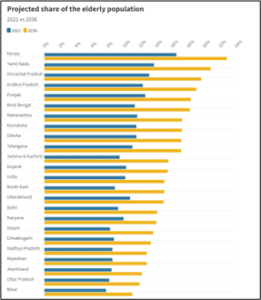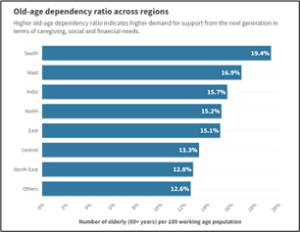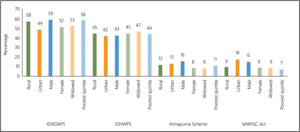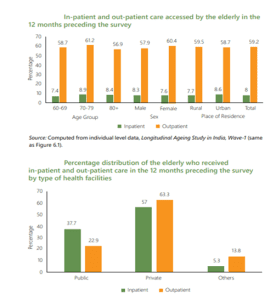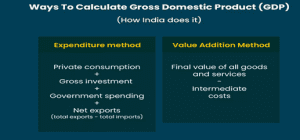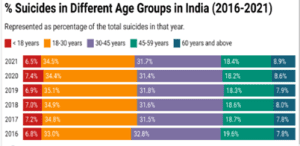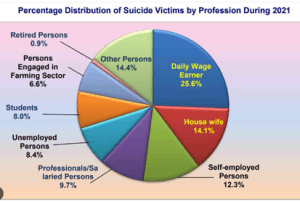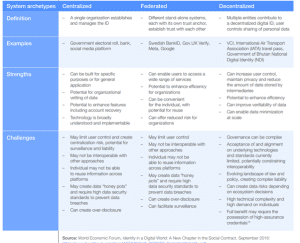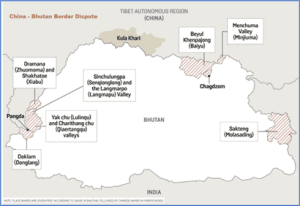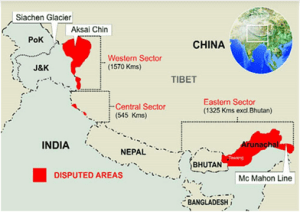21ST NOVEMBER 2023 DNA TOPICS
TOPIC 1: ELECTRIC VEHICLE (EV) BATTERY RECYCLING
TAG: GS 3: SCIENCE AND TECHNOLOGY
THE CONTEXT: India’s ambition to lead in electric vehicle (EV) adoption is strongly linked to the necessity of safeguarding its battery supply chain. Despite the country’s shortage of mineral reserves, the emphasis on battery recycling to guarantee material security shows significant potential.
EXPLANATION:
- The electric vehicle (EV) battery recycling has a critical role in India’s pursuit of decarbonization and sustainable mobility.
- We will explain in this article about the challenges, opportunities and other aspects associated with recycling lithium-ion batteries, which are vital components of EVs.
- Challenges in the Battery Supply Chain:
- India’s dependence on imported battery cells for its electric vehicles exposes the sector to geopolitical risks and supply chain vulnerabilities.
- The lack of domestic mineral reserves, particularly for crucial materials like lithium, cobalt, and nickel, intensifies this reliance.
- Opportunity in Recycling:
- Recycling retired batteries emerges as a strategic solution to mitigate supply chain risks, ensure material security, and reduce reliance on raw material imports.
- It will minimize environmental hazards from e-waste.
- It will advance towards achieving Net Zero emissions.
- This approach aligns with India’s ambitions for clean energy and reduced carbon emissions.
- Growing Volume of Retired Batteries:
- Although the electric vehicle industry in India is still in its early stages, the arrival of used batteries has commenced.
- It suggests the potential increase in retired batteries due to the nation’s ambitious plans for electrification.
- Scope for Recycling and Second-Life Usage:
- Retired batteries, even after reaching 70-80% of their original capacity, can still be repurposed for non-automotive applications, like stationary energy storage.
- Recycling involves extracting valuable materials such as lithium, cobalt, nickel, and manganese for reuse in manufacturing new batteries.
- Current Recycling Infrastructure:
- Presently, India’s lithium-ion battery recyclers primarily focus on pre-treatment to extract valuable materials.
- However, there’s limited high-end refining capacity for the separation and recovery of battery-grade materials.
- Investment and Market Challenges:
- Establishing battery recycling units requires substantial capital investment, making it a capital-intensive endeavour.
- Moreover, without a robust domestic market for battery components, recyclers depend on global markets both for sourcing raw materials and selling final products.
- It hinders India’s self-reliance in the battery supply chain.
- Global Dynamics and Export Restrictions:
- Global trends, such as protectionist policies limiting black mass exports and the rising costs of transporting battery scrap, further complicate India’s reliance on importing recycled materials.
- Black Mass is a mixture of all the valuable materials contained in a lithium-ion cell.
- The black mass is checked for quality and relevant batches go through extraction, which is essentially a chemical process in which first graphite is recovered, followed by lithium, nickel, cobalt and manganese in that order.
- These materials can then be used to manufacture anode and cathode and are ready to enter the supply chain again.
- Efforts for Self-Sufficiency:
- Initiatives are underway to develop domestic capabilities in cell manufacturing and refining processes to retain extracted materials within India for reuse in its industries.
- Global trends, such as protectionist policies limiting black mass exports and the rising costs of transporting battery scrap, further complicate India’s reliance on importing recycled materials.
CONCLUSION:
- Domestic battery manufacturers are gearing up to establish cell manufacturing capabilities, which could potentially reduce dependence on imports and strengthen India’s position in the battery supply chain.
- There is a dire need for revised Battery Waste Management Rules to enhance recycling efficiency and promote the development of a robust domestic market for recycled battery materials.
- The challenges in infrastructure, investment, and market dynamics must be addressed to achieve self-sufficiency in the battery supply chain.
TOPIC 2: NITROGEN-9
TAG: GS 3: SCIENCE AND TECHNOLOGY
THE CONTEXT: As per the study published in “Physical Review Letters” a specific resonant state indicating the existence of nitrogen-9, an unusual isotope, has been discovered.
HIGHLIGHTS OF THE STUDY:
- Isotope Characteristics and Stability:
- Nitrogen-9 is highlighted due to its unique proton-to-neutron ratio, which places it outside conventional stability thresholds.
- The unusual properties of this isotope raise questions about its existence and stability, prompting scientific investigation.
- Drip Lines and Isotope Limits:
- Drip Lines:
- Drip lines are theoretical boundaries that indicate the limits of nuclear stability concerning the number of protons and neutrons in an atomic nucleus.
- There are two types of drip lines: the neutron drip line and the proton drip line.
- Neutron Drip Line:
- It represents the boundary beyond which an atomic nucleus becomes unstable due to an excess of neutrons.
- For instance, oxygen-24 with 16 bound neutrons represents the heaviest stable isotope of oxygen.
- Adding more neutrons beyond this point causes the nucleus to become too unstable.
- Proton Drip Line:
- This concept refers to the boundary beyond which nuclei become unstable due to an excess of protons.
- Nuclei with imbalanced ratios of protons to neutrons pose a challenge, especially beyond these drip lines.
- Challenges in Understanding:
- Nuclei with unbalanced proton-neutron ratios, particularly those situated beyond the drip lines, are difficult to categorize and predict their stability. This lack of understanding poses a significant challenge to physicists in classifying and comprehending these nuclei.
- Experimental Study on Nitrogen-9:
- The study aimed to confirm the existence of nitrogen-9 through experimental methods.
- By bombarding beryllium-9 with an oxygen-13 beam, researchers observed resulting particles and utilized detectors to analyze the reactions.
- They discovered specific resonant states indicating the existence of nitrogen-9.
- Resonant States and Findings:
- The detection of distinct peaks in the energy spectrum revealed stable resonant states of nitrogen-9, corroborated by the Gamow shell model’s theoretical predictions.
- These findings strongly supported the existence of nitrogen-9, challenging previous interpretations and expanding the nuclide chart’s boundaries.
- Implications and Future Studies:
- The discovery of nitrogen-9 suggests the potential for more isotopes beyond conventional limits.
- This challenges existing knowledge and offers insights into subatomic structures.
- Theoretical models like the Gamow shell model enhance understanding and pave the way for further research into exotic isotopes’ properties and their role in astrophysical processes.
TOPIC 3: HIJACKING OF THE SHIP BY HOUTHIS
TAG: GS 2: INTERNATIONAL RELATIONS
THE CONTEXT: Recently, the Yemen rebel group of Houthis seized an Israel-linked ship bound for India, raising fears of another dimension being added to the ongoing Gaza conflict.
EXPLANATION:
- Houthi fighters descended on the ship from helicopters and took all 25 crew members hostage.
- The crew is being treated “in accordance with Islamic values”.
- Israel has claimed the ship is British-owned and Japanese-operated while terming the hijack “another Iranian act of terrorism”.
WHY WAS THE SHIP HIJACKED?
- The ship, Galaxy Leader, was heading from Turkey towards Pipavav in Gujarat, and had no cargo on board.
- Its crew members are from Bulgaria, Romania, Ukraine, Mexico, and the Philippines.
- The hijacking is in line with the Houthis’ earlier statement, where they had said they would attack Israel-linked ships in the Red Sea and the crucial Bab al-Mandeb, a narrow strait that connects the Red Sea to the Gulf of Aden, if Israel continued its bloodshed in Palestine.
- After the hijacking, the Houthis’ chief negotiator and spokesman, said that the Israelis only understand “the language of force,”.
HOW HAS ISRAEL REACTED, AND WHY IS JAPAN INVOLVED?
- Israel’s Denial and Accusations:
- Israel denied ownership or operation of the ship and clarified that no crew members were Israeli.
- However, the office of Israel Prime Minister accused Iran of engaging in an act of terrorism, indicating a perceived escalation in Iran’s aggression against global citizens and the potential impact on international shipping security.
- Israeli Connection:
- Although Israel disclaimed ownership, there are reported links between the ship and an Israeli billionaire associated with Ray Car Carriers.
- This association raised eyebrows given the ship’s ownership details, with Ungar being known as one of Israel’s wealthiest individuals.
- Notably, a previous explosion on a vessel linked to Ungar in the Gulf of Oman in 2021 had been attributed by Israeli media to Iran.
- Global Response:
- The Israeli military termed the hijacking a serious incident with global implications, indicating the severity and broader ramifications of the event.
- Meanwhile, Japanese officials condemned the hijacking as well, as the Galaxy Leader was operated by the Japanese company Nippon Yusen.
- Japan is actively engaging in negotiations with the Houthis while seeking assistance from Saudi Arabia, Oman, and Iran to secure the release of the ship and its crew.
WHO ARE THE HOUTHIS, AND WHY ARE THEY INVOLVED AT ALL?
- The Houthis are a rebel group locked in a civil war with the Yemen government for almost a decade.
- They are in power in northern Yemen, including the official capital Sanaa. The official government now operates out of Aden.
- The group is named after the Houthi tribe.
- The Houthis are Zaydi Shias backed by Iran, while the Yemen government has the support of Iran’s biggest rival Saudi Arabia and the West.
- The group’s origins lie in a Zaydi religious revival movement of the early 1990s.
- Houthis’ support for “brothers and sisters in Palestine” stems from a staunch opposition to Israel and the West.
Military Significance:
- The Houthi rebels possess a substantial fighting force with tens of thousands of fighters and a considerable arsenal of ballistic missiles and armed drones.
- While their stronghold geographically may not directly threaten Israel, they have launched missiles towards Israel, presenting a risk of escalating conflict.
Potential Consequences and Regional Implications:
- The involvement of the Houthis in conflicts and their actions, such as seizing vessels at sea, pose significant risks.
- Their activities have the potential to escalate conflicts and draw in other nations, particularly Iran and Saudi Arabia.
- Additionally, attacks or retaliations involving Israel may necessitate crossing Saudi Arabian territory, potentially dragging Saudi Arabia into the conflict.
TOPIC 4: RISK WEIGHT AND ITS IMPACTS
TAG: GS 3: ECONOMY
THE CONTEXT: The Reserve Bank of India (RBI) has increased the risk weight by 25 percent on consumer credit exposure of commercial banks and non-banking finance companies (NBFCs).
EXPLANATION:
- This move by the RBI aims to address concerns arising from the rapid growth of unsecured loans and the potential risks associated with them.
- There are certain implications of the Reserve Bank of India’s (RBI) decision to increase risk weights on certain categories of loans, primarily unsecured loans like credit cards, consumer durable loans, and personal loans. We will discuss the implications one by one now.
What are Risk Weights?
- Risk weights are used by banks to determine the capital requirement for loans based on their inherent risk.
- Each type of loan is assigned a risk weight, which influences the bank’s capital allocation to cover potential losses.
Impact on Borrowers:
- Lower risk weights typically lead to lower interest rates for borrowers.
- Loans with lower risk weights, such as home loans, tend to have lower interest rates compared to higher-risk loans like personal loans and credit cards, which have higher interest rates.
RBI’s Decision on Risk Weights:
- The RBI increased risk weights on unsecured loans, particularly credit cards, consumer durable loans, and personal loans.
- This decision means that banks will need to allocate more capital to cover these loans’ potential risks.
Reasons for RBI’s Concern:
- The RBI is worried about the increasing share of unsecured loans, which has risen to 10% of the banking system.
- These loans, especially consumer durable loans, may not generate income and could pose repayment challenges as the end-use of the borrowed money cannot be effectively monitored.
Potential Impact on Retail Loans:
- The new risk weight limits could lead to banks needing more capital to cover these loans, which might affect their lending capacities.
- However, since most lenders are well-capitalized (above the statutory threshold), an immediate need to raise more capital might not arise.
Impact on Loan Demand and Pricing:
- Despite the increase in risk weights, it is suggested that there might not be an immediate curb on loan growth, as demand for loans has been robust regardless of interest rates.
- However, banks’ overall pricing power might be affected, which could influence the cost of borrowing for consumers.
CONCLUSION:
- This RBI measure aims to mitigate risks arising from the rapid growth of unsecured loans by increasing the capital buffer that banks must set aside.
- While it might not immediately restrict lending due to robust demand, it could affect the overall pricing dynamics of loans, potentially impacting borrowers’ borrowing costs.
- The RBI’s decision to increase risk weights on certain loans is aimed at addressing concerns about the rising share of unsecured loans and potential risks they pose to the banking system, but its immediate impact on loan growth and interest rates remains to be closely observed.
TOPIC 5: INDIA-AUSTRALIA 2+2 MINISTERIAL DIALOGUE
TAG: GS 2: INTERNATIONAL RELATIONS
THE CONTEXT: As part of the India-Australia 2+2 Ministerial Dialogue, Indian Defence Minister and Australian Deputy Prime Minister and Defence Minister held a bilateral meeting recently, reaffirming their commitment to strengthening the defence relations between the two nations.
HIGHLIGHTS OF THE MEETING:
- Military-to-Military Cooperation:
- Both ministers expressed satisfaction with the increasing military-to-military cooperation, citing joint exercises, exchanges, and institutional dialogues as essential elements in solidifying the bond between India and Australia.
- This highlights the practical steps taken to bolster collaboration beyond mere diplomatic rhetoric.
- Acknowledgment of Achievements:
- Defence Minister congratulated Australia on the successful execution of the ‘Malabar’ multilateral exercise in August.
- The acknowledgment demonstrates recognition and appreciation for Australia’s efforts in promoting regional security.
- Focus on Maritime Cooperation:
- Emphasis was placed on the necessity to strengthen cooperation in information exchange and maritime domain awareness.
- Advanced discussions on hydrography cooperation and air-to-air refuelling arrangements indicate a shared interest in enhancing maritime security capabilities.
- Collaboration in Specialized Areas:
- Union Minister highlighted the importance of collaboration in specialized training areas such as artificial intelligence, anti-submarine and anti-drone warfare, and cybersecurity.
- It indicates a proactive approach in addressing evolving security challenges by leveraging technological advancements.
- Defence Industry and Research Collaboration:
- Both parties discussed deepening cooperation in the defence industry and research.
- Identified areas include shipbuilding, ship repair, aircraft maintenance, repair, and overhaul, as well as joint research in underwater technologies.
- This signifies a mutual interest in enhancing defence capabilities through joint projects and research initiatives.
- Focus on Defence Start-ups:
- Exploration of collaboration between defence start-ups from both countries signifies a forward-looking approach to addressing security challenges in the evolving security landscape.
- This indicates a recognition of the importance of innovation and technology in defence capabilities.
- Regional Security Significance:
- Both ministers agreed that a robust India-Australia defence partnership not only benefits both nations but also contributes significantly to the overall security of the Indo-Pacific region.
- The meeting highlighted the broader regional implications and shared responsibility in maintaining regional stability and security.
What is the 2+2 Dialogue?
- 2+2 Ministerial is the highest-level institutional mechanism between the two countries.
- It is a format of dialogue where the defence/foreign ministers or secretaries meet with their counterparts from another country.
- India has 2+2 dialogues with four key strategic partners: the US, Australia, Japan, and Russia.
- Besides Russia, the other three countries are also India’s partners in the Quad.



